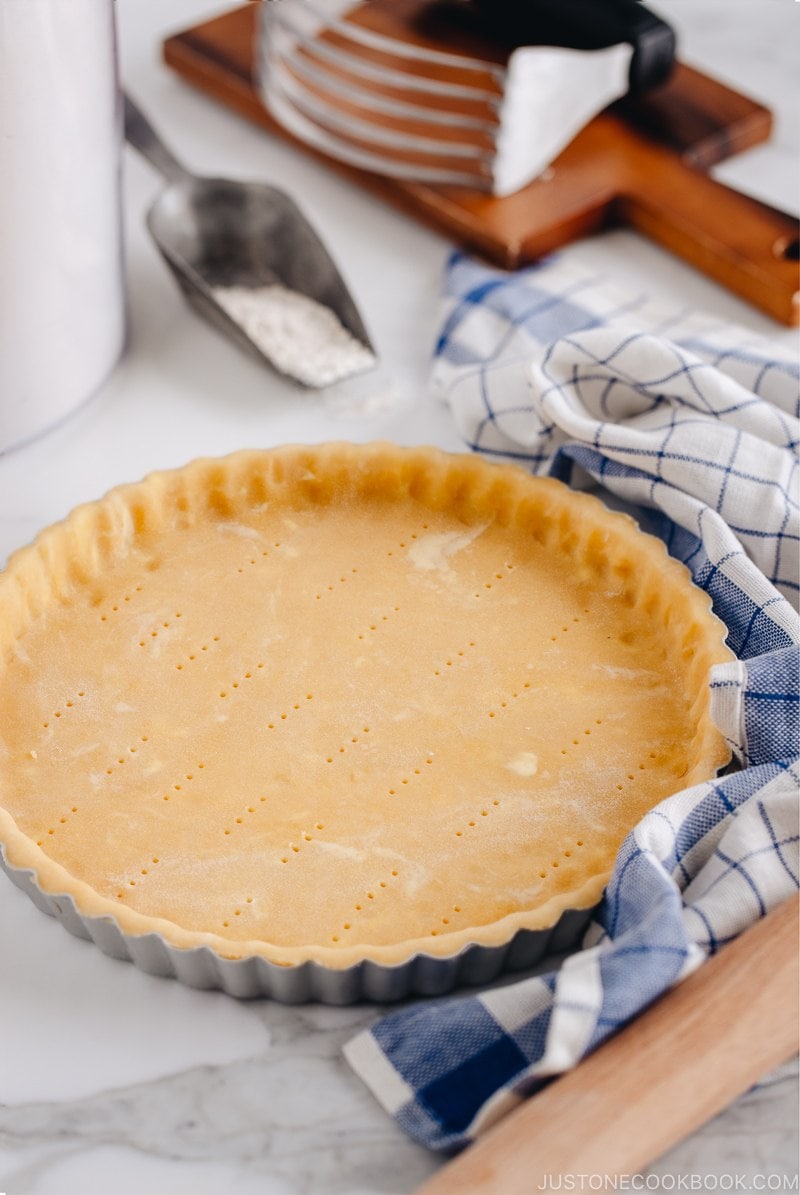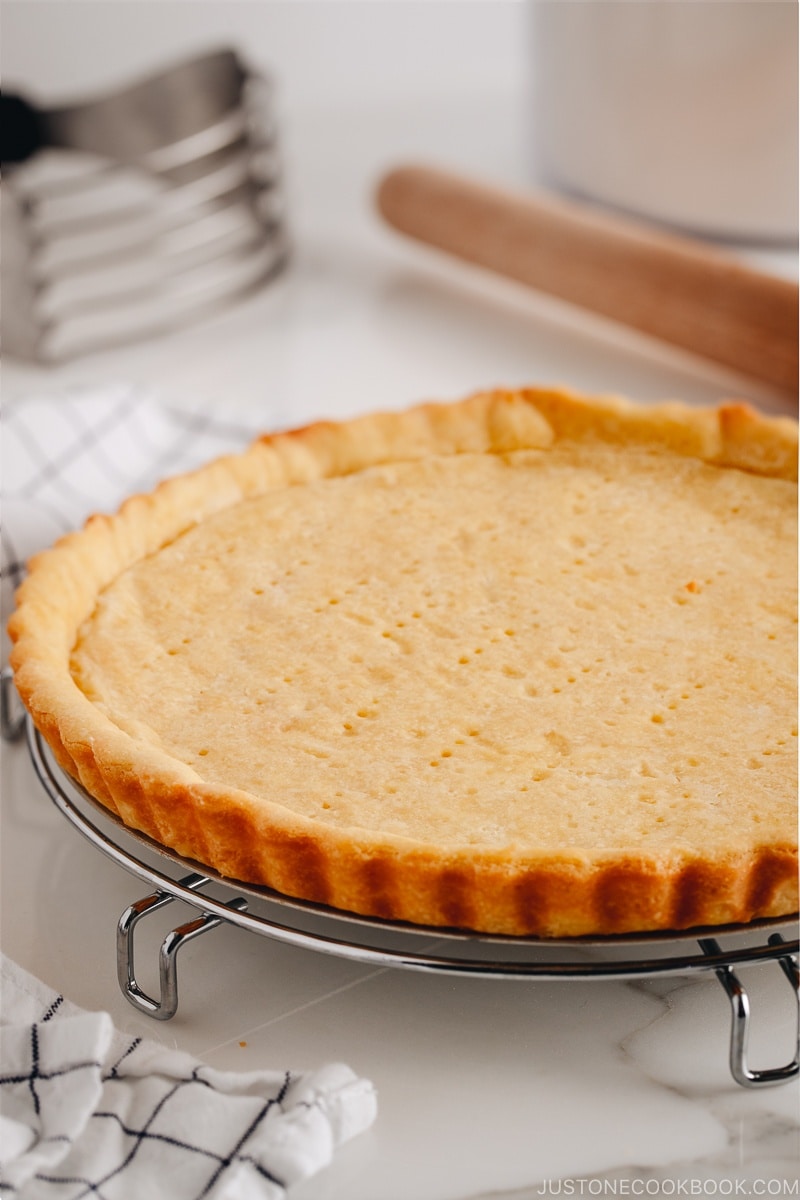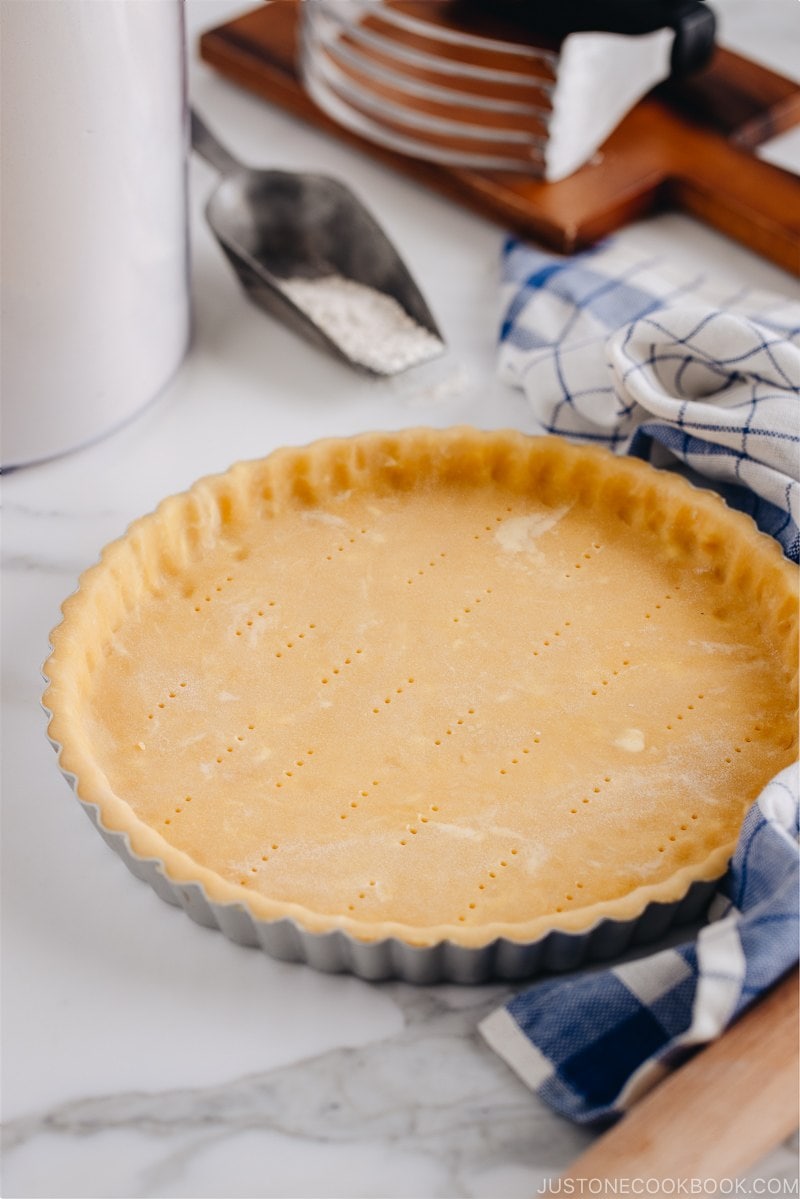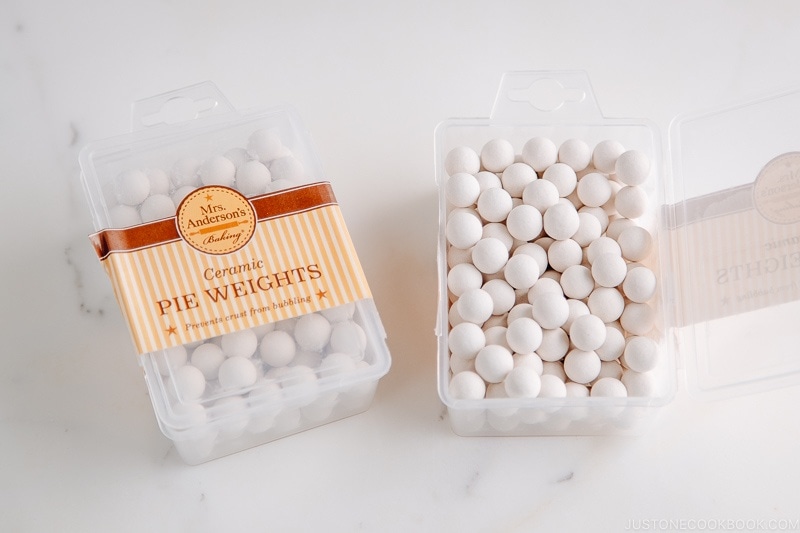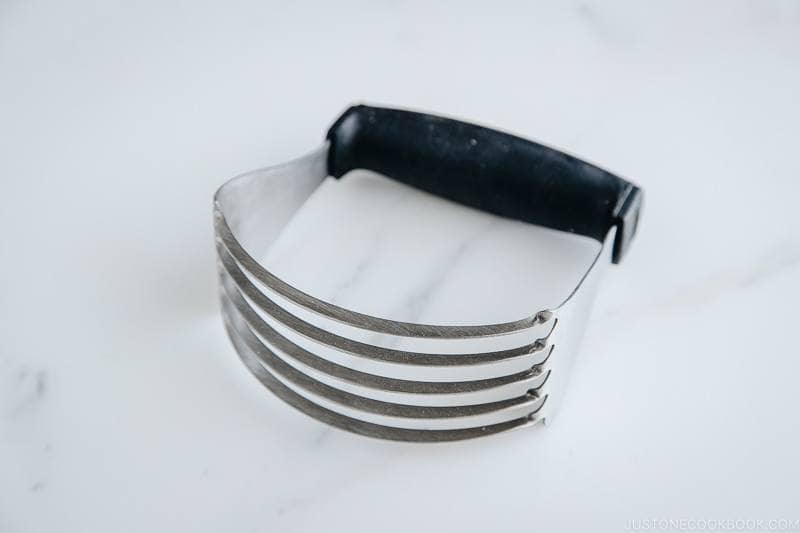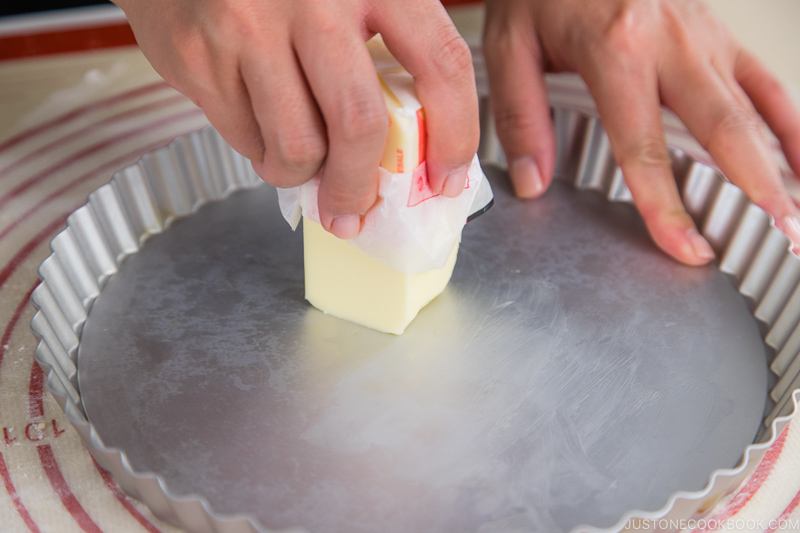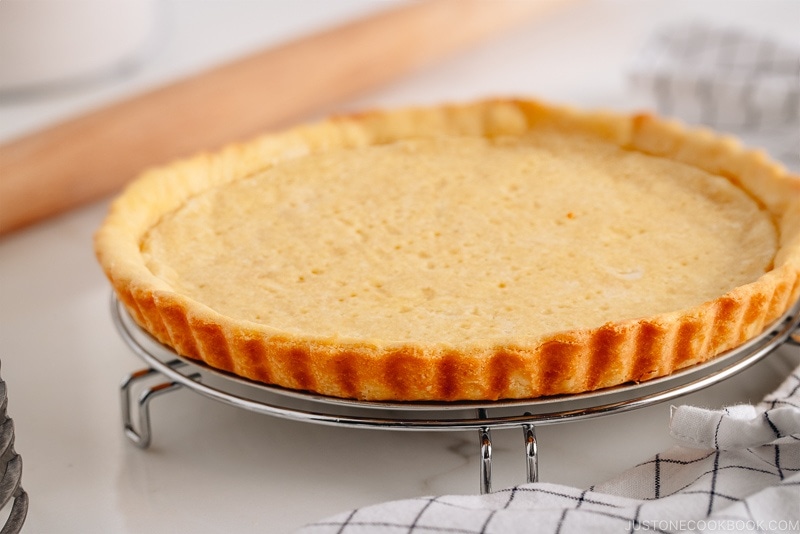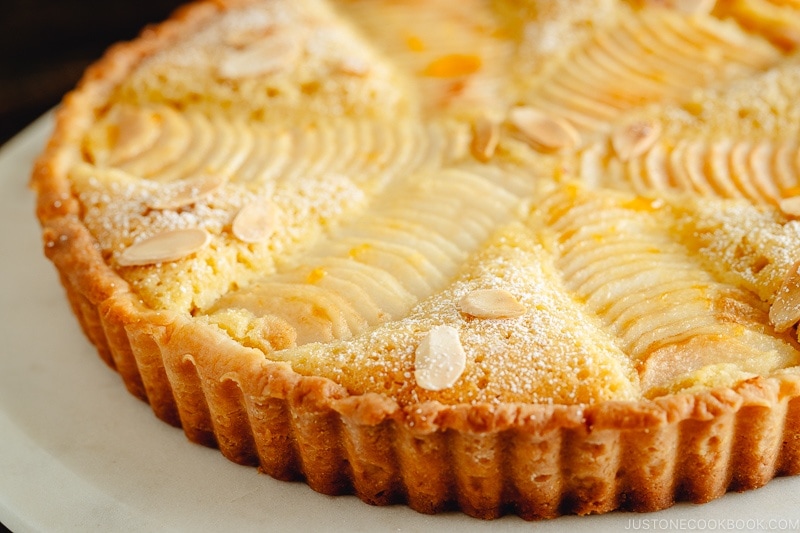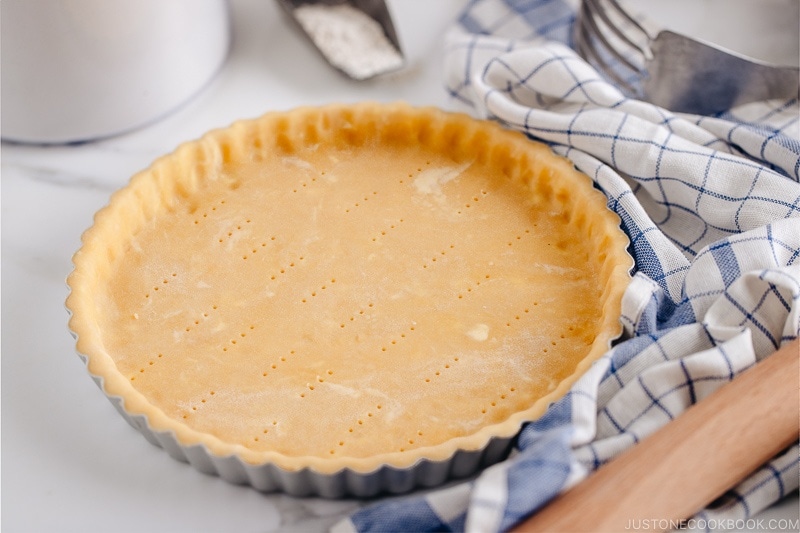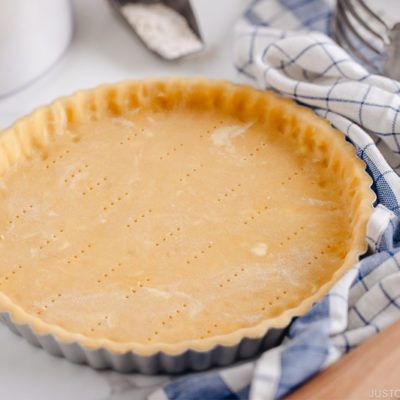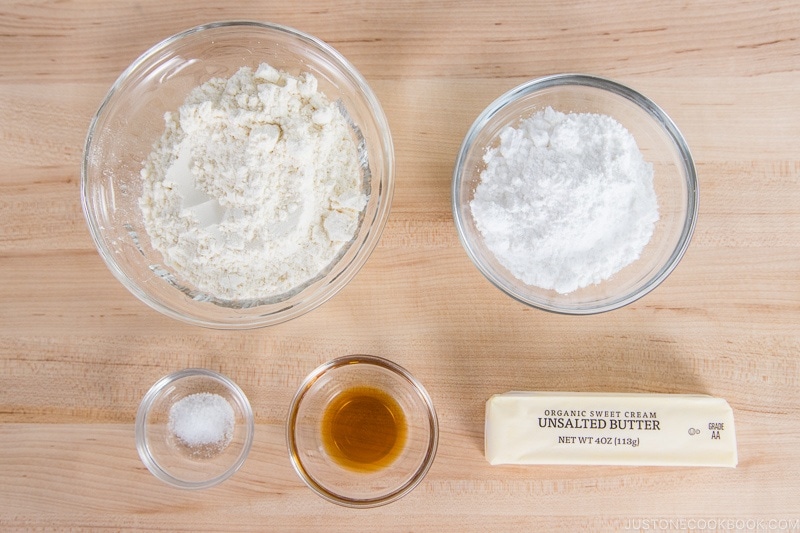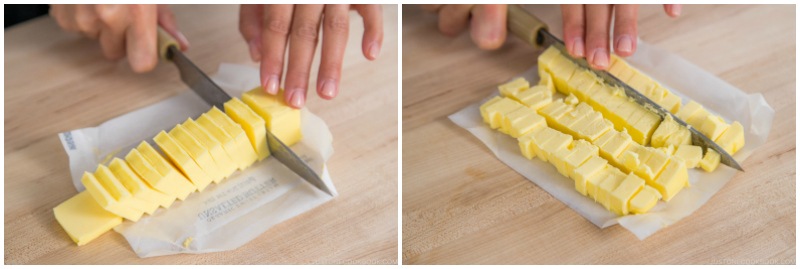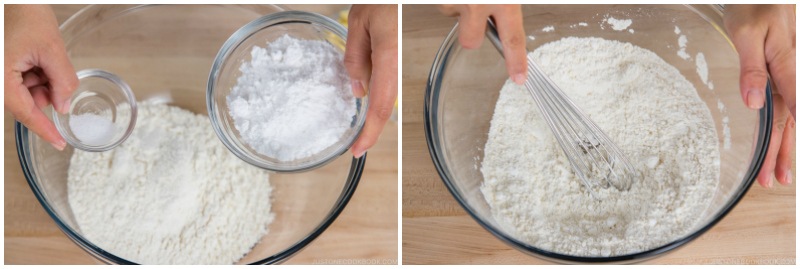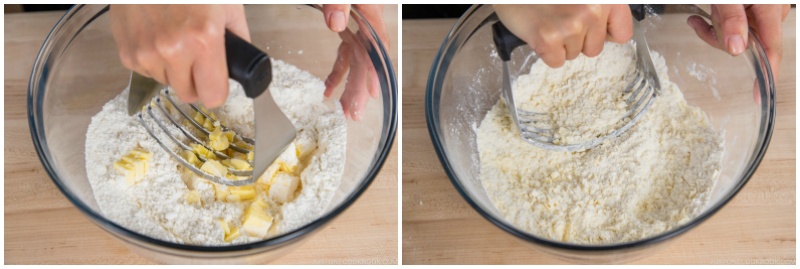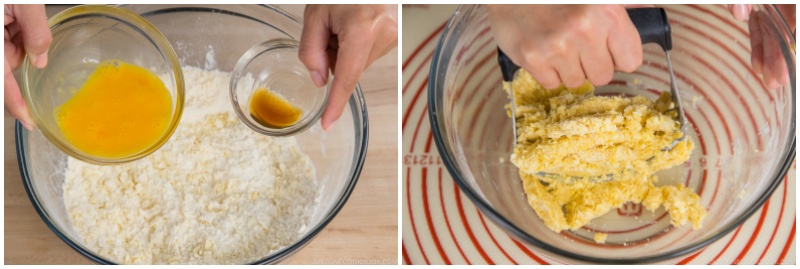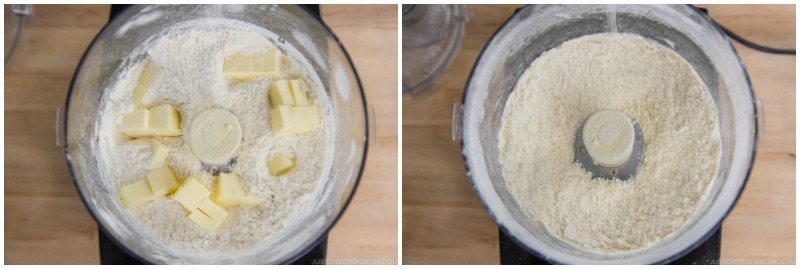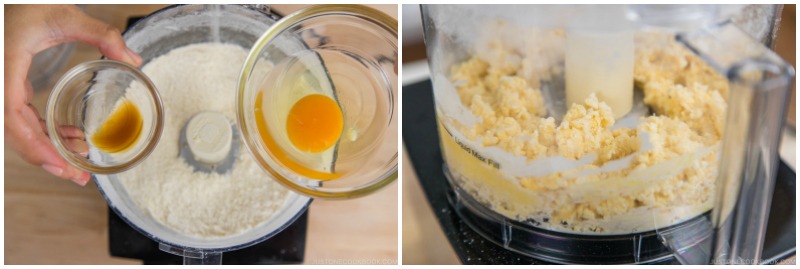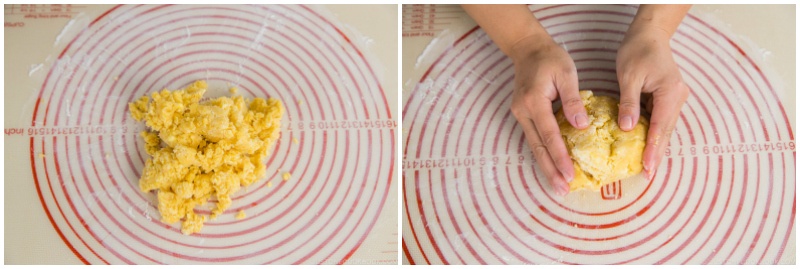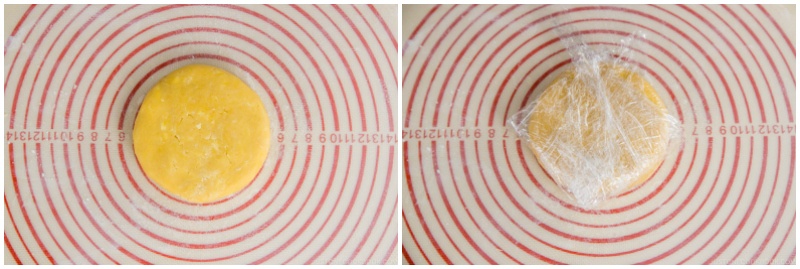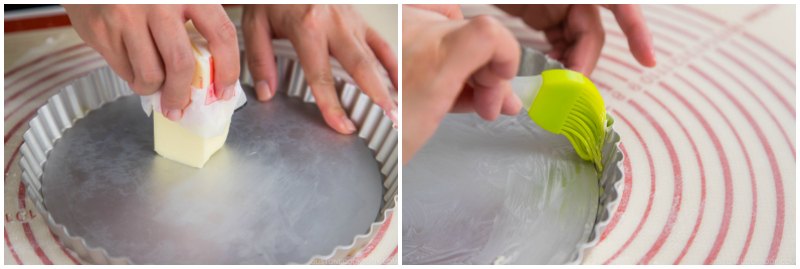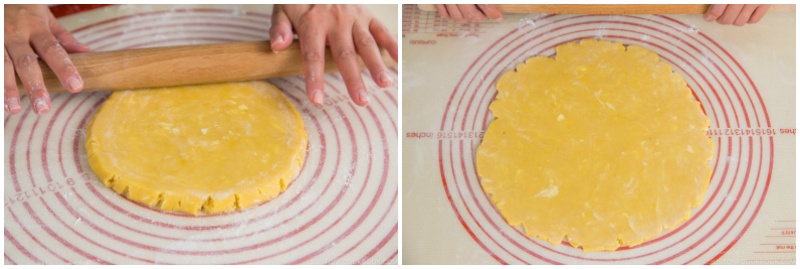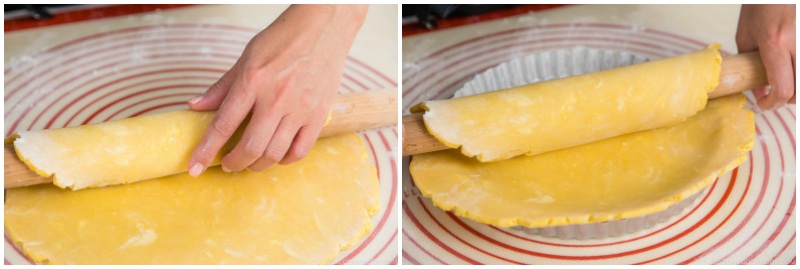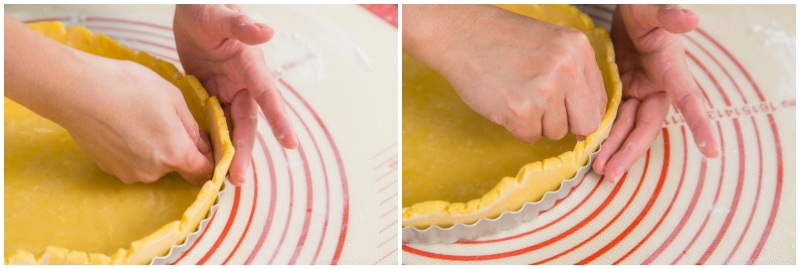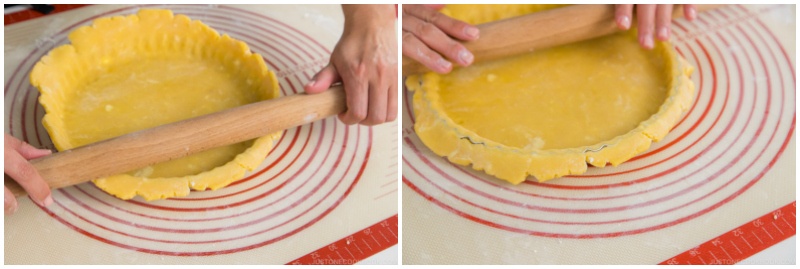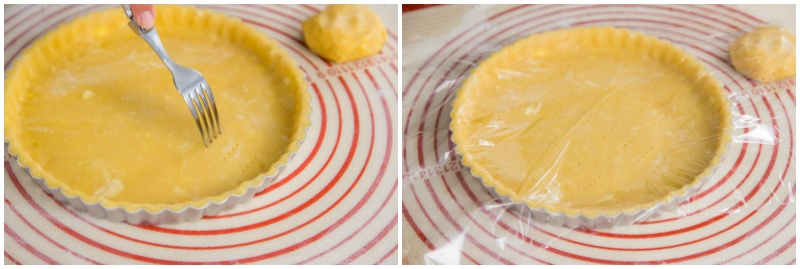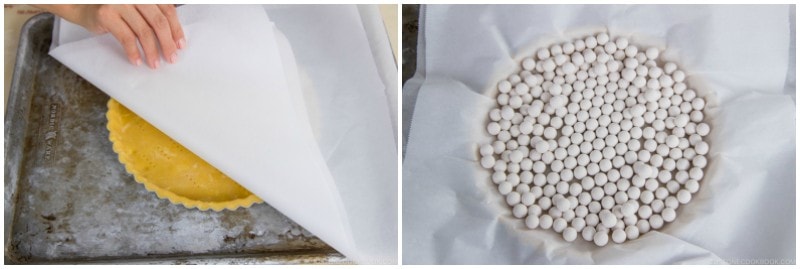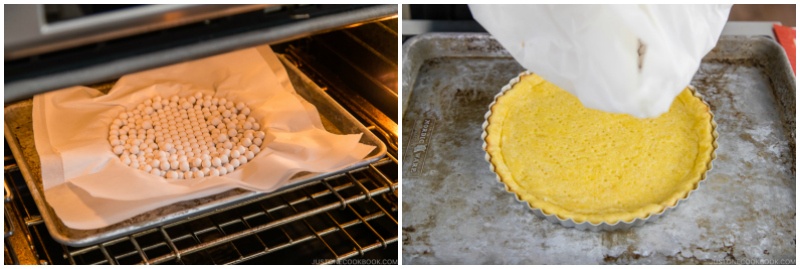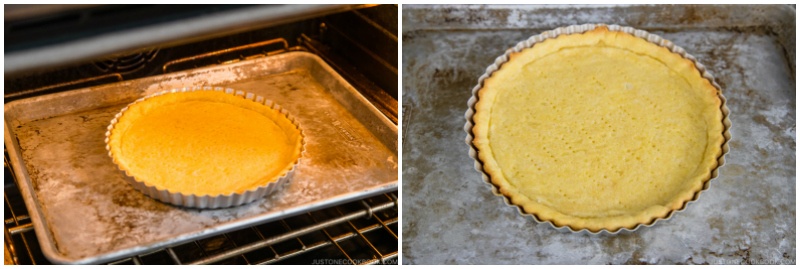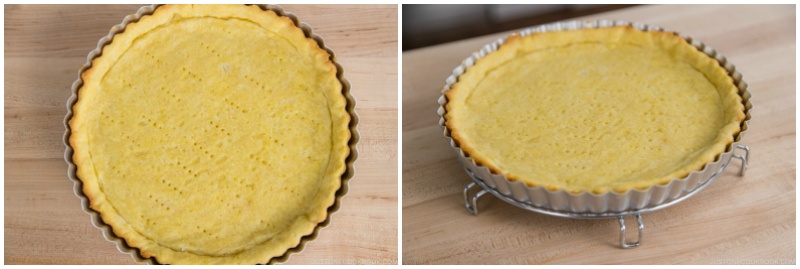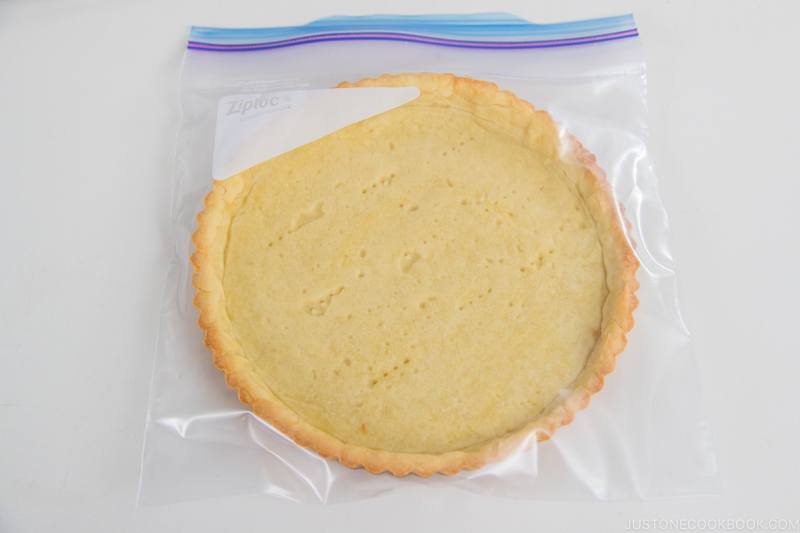I love pies and tarts more than cakes. Since I was young, I always liked food with a crispy and crusty texture more than the one with a soft or mushy texture. Tarts especially are my favorite kind of dessert and I would go for any filling or toppings, as long as the crust is perfectly baked. Being picky about the tart crusts naturally made me bake them myself. The store-bought ones either use low-quality ingredients or are not buttery enough. When you make your own tart crust, you get to pick the best flour, good-quality butter, the best egg…right, the best of everything for the crust love!
Ingredients for Sweet Tart Crust
All-Purpose Flour
I had been making tart crusts with cake flour (薄力粉) because that’s what we use in Japan. However, due to the popularity of all-purpose flour (中力粉) here in the U.S., I have switched to all-purpose flour for the tart crust. I feel the tart crusts made with cake flour tend to be more crispy and refined in texture, but I think the difference is not so easy to tell, and I do like tart crusts made with all-purpose flour.
Confectioners’ Sugar
Confectioners’ sugar, also called powdered sugar or icing sugar, is granulated sugar that has been ground into a finely milled powder and has about 3% cornstarch added. This type of sugar makes the sweet tart crust light and slightly crispier than pie dough, kind of like shortbread cookies. The fine confectioners’ sugar yields a more tender crust due to the cornstarch while granulated sugar makes it more crumbly. I really like how the tart turns out with this recipe, but if you still want to use granulated sugar, you can use half the amount of confectioners’ sugar. For example, for 1 cup confectioners’ sugar, you can substitute with 1/2 cup granulated sugar.
Whole Egg
A lot of recipes call for adding egg yolk and very cold water to the dry ingredients, but after I’ve tested adding one cold whole egg, I think it works perfectly and I like that I don’t have to worry about the egg white.
What is Blind Baking?
Blind baking is a fancy term for prebaking a pie/tart crust before adding the filling to it. Because the sweet tart dough puffs up during baking, you need to weigh down the bottom of the pie/tart with pie weights, dried rice, beans, or pennies until it no longer puffs up. Then you would remove the pie weights to continue baking a little longer. Depending on the pie/tart recipes, they call for an “unbaked crust”, a “partially baked crust”, or a “fully baked crust”. You can decide when to end the process of the recipe.
The unbaked crust requires no baking required in this recipe. As soon as the tart crust is chilled, it’s ready to move onto your recipe. The partially baked crust requires a shorter baking time than the fully baked crust because the crust will be fully baked after adding the filling to the partially baked crust. The fully baked crust requires full baking time because it is usually filled with the filling which does not require additional baking, such as a fruit tart with custard filling.
Blind baking prevents the tart crust from becoming soggy. Since I like my tart crust to be crispy, I almost always partially bake the crust if the filling has some moisture in it.
Kitchen Tools You Need for Making a Sweet Tart Crust
1. Pie Weights
Pie weights are used to keep a pie/tart crust from bubbling and shrinking away from the edge of the pie plate or tart pan when you’re blind baking a crust. I use these pie weights (you will need 2 boxes for 9-inch tart pan) but you can use dried rice, beans, or pennies to keep the tart dough down.
2. Pastry Cutter
Many tart dough recipes use a food processor to make the tart dough, but don’t worry. All you need to make a perfect tart dough is this pastry cutter. You can use a few forks to do the job, but your fingers will be very tired pressing down the tough dough.
3. Anodized Aluminum Tart Pan
I recommend this 9.5-inch anodized aluminum tart pan. I also have a non-stick tart pan, but from my personal experience, the tart crust shrinkage is much bigger and it always creates a bigger gap from the crust and tart pan after baking fully. It’s probably because there’s nothing for the dough to “grip.”
How to Prevent Tart Crust from Shrinking
Here are a few tips to prevent your pastry from shrinking when it’s baked:
1. Don’t overwork your dough
Over-kneading the dough will develop too much gluten. Gluten produces elasticity in the dough and once the overworked dough is subjected to heat, it recoils quickly, pulling away from the sides of the pan and shrinking.
2. Let your pastry dough rest
The reason is to counter gluten development. After being worked, the dough needs to rest fully to relax any elasticity that has been developed. Let your dough rest for 30-60 minutes minimum, but the longer you can let it rest, the better it is.
3. Let your tart crust chill in the fridge/freezer
Why do we chill or freeze the tart crust before baking? The butter in pastry dough should be very cold or frozen. That way, when you put the tart crust in the hot oven, it won’t melt fast and gives stability to the tart shape while a crust is being formed. With these few tips in hand, you’d be ready to bake up the perfect tart crust for your holiday pies and tarts. Buttery and flaky, crumbly and delicate, just as good as a tart crust should be. Pear and Almond Tart Wish to learn more about Japanese cooking? Sign up for our free newsletter to receive cooking tips & recipe updates! And stay in touch with me on Facebook, Pinterest, YouTube, and Instagram.
